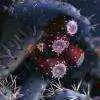-
Welcome to Celiac.com!
You have found your celiac tribe! Join us and ask questions in our forum, share your story, and connect with others.
-
Celiac.com Sponsor (A1):
Celiac.com Sponsor (A1-M):
-
Get Celiac.com Updates:Support Our Content
Iron Supplements - Queasy Feeling?
-
Get Celiac.com Updates:Support Celiac.com:
-
Celiac.com Sponsor (A17):
Celiac.com Sponsor (A17):
Celiac.com Sponsors (A17-M):
-
Recent Activity
-
- GlorietaKaro replied to GlorietaKaro's topic in Super Sensitive People3
Am I nuts?
Thanks to both of you for your responses! Sadly, even after several years of very strict gluten avoidance, I remember the symptoms well enough that I am too frightened to risk a gluten challenge— heartbeat and breathing problems are scary— Scott, thank you for the specific information— I will call around in the new year to see if I can find anyone. In t... -
- trents replied to GlorietaKaro's topic in Super Sensitive People3
Am I nuts?
Welcome to the celiac.com community, @GlorietaKaro! As Scott indicated, without formal testing for celiac disease, which would require you to have been consuming generous amounts of gluten daily for weeks, it would be not be possible to distinguish whether you have celiac disease or NCGS (Non Celiac Gluten Sensitivity). Their symptoms overlap. The difference... -
- lalan45 replied to xxnonamexx's topic in Post Diagnosis, Recovery & Treatment of Celiac Disease29
My journey is it gluten or fiber?
That’s really frustrating, I’m sorry you went through that. High fiber can definitely cause sudden stomach issues, especially if your body isn’t used to it yet, but accidental gluten exposure can feel similar. Keeping a simple food/symptom journal and introducing new foods one at a time can really help you spot patterns. You’re already doing the right things ... -
- Russ H posted a topic in Celiac Disease Pre-Diagnosis, Testing & Symptoms0
Anti-endomysial Antibody (EMA) Testing
I thought this might be of interest regarding anti-EMA testing. Some labs use donated umbilical cord instead of monkey oesophagus. Some labs just provide a +ve/-ve test result but others provide a grade by testing progressively diluted blood sample. https://www.aesku.com/index.php/ifu-download/1367-ema-instruction-manual-en-1/file Fluorescence-labelled... -
- Scott Adams replied to JoJo0611's topic in Post Diagnosis, Recovery & Treatment of Celiac Disease1
Just diagnosed today
First, please know that receiving two diagnoses at once, especially one you've never heard of, is undoubtedly overwhelming. You are not alone in this. Your understanding is correct: both celiac disease and Mesenteric Panniculitis (MP) are considered to have autoimmune components. While having both is not extremely common, they can co-occur, as chronic inflammation...
-





Recommended Posts
Archived
This topic is now archived and is closed to further replies.